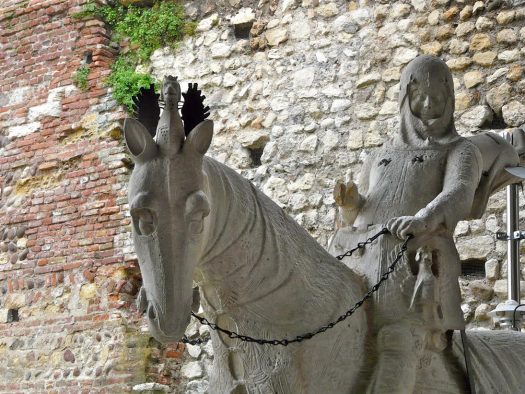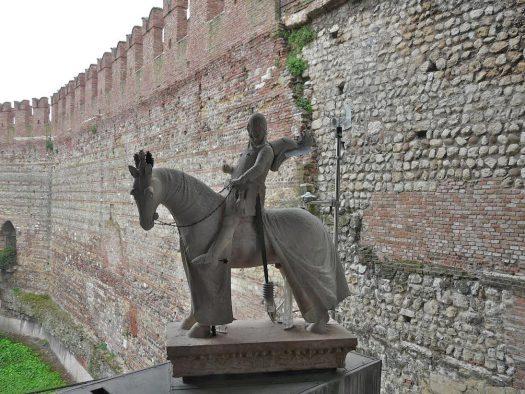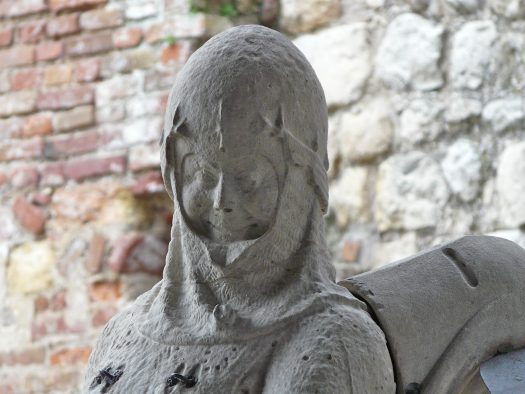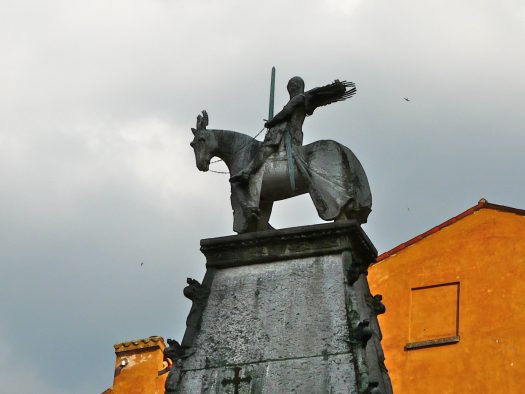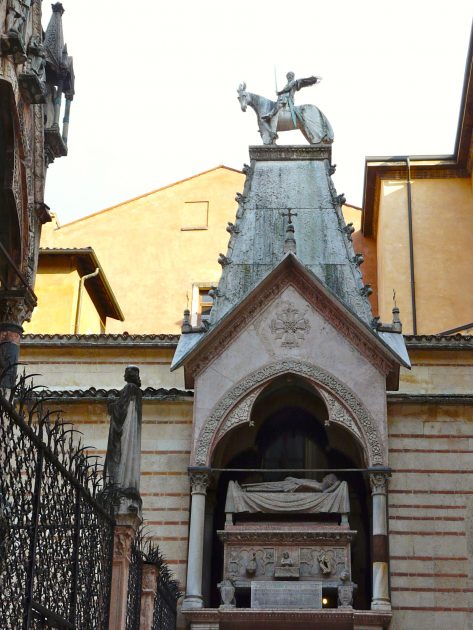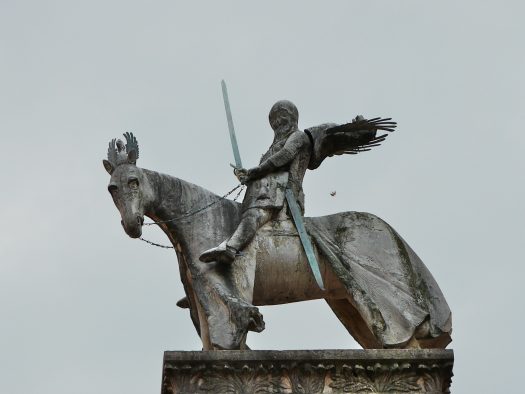The Scaliger Tombs is a group of monuments in Verona, celebrating the Scaliger family, who ruled there from the thirteenth to the late fourteenth century. On top of the tombs – which are outstanding examples of Gothic art – we see equestrian statues of Cangrande I, Mastino II and Cansignorio, all dating from the fourteenth century.
The originals of two of these sculptures, Cangrande I and Mastino II, are in Castelvecchio Museum in Verona. The sculptures are remarkable. Carved from one block of stone, the sculptures show Cangrande I with a smiling, youthful face, expressing kindness and benevolence in a moment of rest, and Mastino II in the moment before charging into a duel, with his face hidden behind a helmet in the form of a winged mastiff.
The tomb of Cangrande I was the first tomb built, in the 14th century, according to the will of the deceased, the most famous Scaliger ruler of the city. The designer was the architect of the church of Sant’Anastasia, who planned it in the shape of a Gothic tabernacle, supported by richly harnessed dogs (Cangrande meaning “Big dog” in Italian). On the sepulchre’s cover is the recumbent statue of the lord, characterized by an unusual smile. The selpuchre is decorated on each side by high-reliefs with religious themes and bas-reliefs with military themes. On the summit of the baldachin was once an equestrian statue of Cangrande, now replaced by a copy (the original is in the museum of Castelvecchio).
